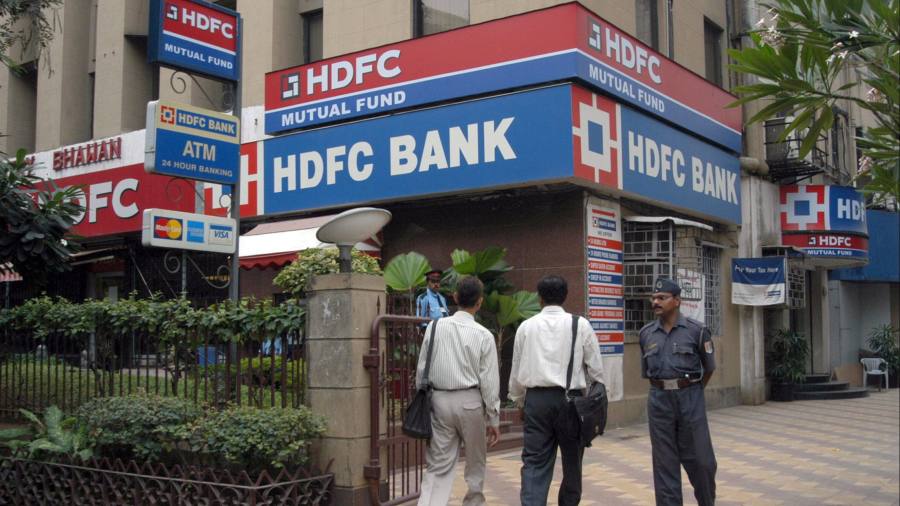Receive free Banks updates
We’ll send you a myFT Daily Digest email rounding up the latest Banks news every morning.
The writer is an adviser to fintech companies and a former financials analyst
US banks have rallied hard in the past month driven by a healthy earnings season and a rebound in investor confidence in the economy and the financial sector. After the sector turmoil over the collapse of Silicon Valley Bank, it is very much a case of crisis averted. European bank share prices have been more muted over the past month but are up 25 per cent over the past 12 months.
JPMorgan Chase now stands head and shoulders above all global peers in market value. Three other mega caps — Bank of America, Wells Fargo and Morgan Stanley — are among the largest 10 banks in the world by market value.
But, looking a bit deeper, the past few years of deglobalisation have been characterised by the strength of national champions across the world. Only just over a third of the largest 100 banks in the world by market capitalisation are US or European.
Unsurprisingly given the size of its economy, Chinese banks remain near the top of the list. But this phenomenon is not one of a narrow set of countries — with national champions from across Canada, Australia, Japan, the Middle East, Brazil, India, Singapore and Indonesia among the most valuable in the world.
India’s HDFC Bank, which recently merged with Housing Development Finance Corporation, now has a market capitalisation of about $150bn, putting it in the top 10 biggest banks by that measure. That is not far off the $167bn capitalisation of Europe’s largest bank HSBC (which is hardly a traditional western bank). India’s second-largest bank ICICI is now more valuable than the eurozone’s largest bank BNP. Likewise, Indonesia’s Bank Central Asia and Saudi Arabia’s largest bank, Al Rajhi, have market capitalisations only a little less than BNP. Here are some reasons why we are seeing these geographical trends.
Firstly, a superior earnings mix. Investors value recurring and less volatile revenues. We have seen this recently with the valuation spread that has emerged between Morgan Stanley and Goldman Sachs. National champions tend to have less exposure to more volatile trading and investment banking revenues than most European and US banks. The relative merits of traditional banking may look very different if the rises in interest rates over the past 18 months lead to a spike in credit defaults with large loan losses. But longer-term trends are positive.
Secondly, relative profitability. A bank, of course, can be more valuable simply because it has a larger balance sheet. But market capitalisations reflect the current and future earnings power of the banks. European banks are known for their large balance sheets but lower profit margins and returns have driven down valuations based on the “book” value of their equity in the past decade. The higher valuation of JPMorgan reflects the superior return on equity of the bank through the cycle versus its US and European competitors.
Similarly, local market leaders in countries like India, Indonesia, Australia and Canada have benefited from consistently delivering strong returns on equity based on more traditional bread-and-butter banking, sometimes in near oligopolistic market conditions with deep moats.
National champions in fast growing economies such as India or Indonesia are seen as plays on the emerging banking requirements of a middle class in wealth management, increasing penetration of banking into more informal areas of the economy and the growth of the local corporate sector.
In the US and Europe, regulatory pressures have been increasing. Ever since the 2008 crisis, bankers have been in the line of fire of politicians in a way that they have not in other countries. The recent regional banking crisis is likely to preclude any easing of these pressures.
At the same time, competition from “non-bank” parties also has been fierce, whether it be private equity firms expanding aggressively in lending or electronic market makers like Citadel that have challenged banks in trading or money market funds in the US that compete with bank deposits.
This is not unique to the US and Europe, with tech giants Tencent and Alipay having made significant inroads into the banking world in China in recent years. But in general, it is less of a negative force outside the US and Europe. All the noise around fintech has done little to erode shareholder confidence in these national champions. Steadily, they have gained market values larger than most US and European banks.
Read the full article here



